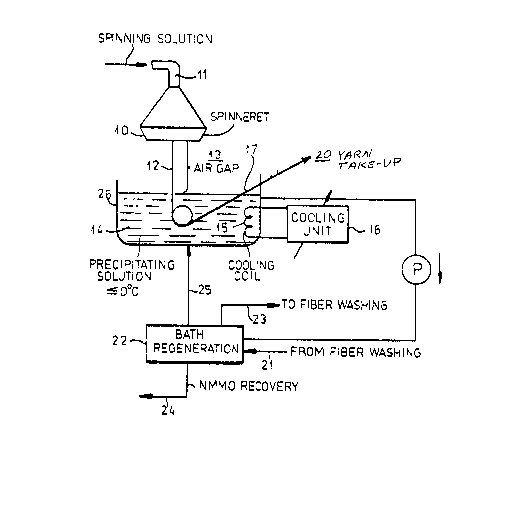Some of the information on this Web page has been provided by external sources. The Government of Canada is not responsible for the accuracy, reliability or currency of the information supplied by external sources. Users wishing to rely upon this information should consult directly with the source of the information. Content provided by external sources is not subject to official languages, privacy and accessibility requirements.
Any discrepancies in the text and image of the Claims and Abstract are due to differing posting times. Text of the Claims and Abstract are posted:
| (12) Patent Application: | (11) CA 2057133 |
|---|---|
| (54) English Title: | METHOD OF PRODUCING SHAPED CELLULOSIC ARTICLES |
| (54) French Title: | METHODE DE PRODUCTION D'ARTICLES FACONNES EN CELLULOSE |
| Status: | Deemed Abandoned and Beyond the Period of Reinstatement - Pending Response to Notice of Disregarded Communication |
| (51) International Patent Classification (IPC): |
|
|---|---|
| (72) Inventors : |
|
| (73) Owners : |
|
| (71) Applicants : |
|
| (74) Agent: | MARKS & CLERK |
| (74) Associate agent: | |
| (45) Issued: | |
| (22) Filed Date: | 1991-12-05 |
| (41) Open to Public Inspection: | 1992-06-08 |
| Availability of licence: | N/A |
| Dedicated to the Public: | N/A |
| (25) Language of filing: | English |
| Patent Cooperation Treaty (PCT): | No |
|---|
| (30) Application Priority Data: | ||||||
|---|---|---|---|---|---|---|
|
7857-MR
ABSTRACT OF THE DISCLOSURE
Shaped cellulosic bodies and especially cellulosic
fibers or filaments are produced by precipitating cellulose
from a solution containing cellulose and NMMO. To allow
elevated concentrations of NMMO in the precipitating bath
without detriment to the properties of the fibers or
filaments produced, the temperature of the precipitating bath
is held at most at 0°C.
Note: Claims are shown in the official language in which they were submitted.
Note: Descriptions are shown in the official language in which they were submitted.

2024-08-01:As part of the Next Generation Patents (NGP) transition, the Canadian Patents Database (CPD) now contains a more detailed Event History, which replicates the Event Log of our new back-office solution.
Please note that "Inactive:" events refers to events no longer in use in our new back-office solution.
For a clearer understanding of the status of the application/patent presented on this page, the site Disclaimer , as well as the definitions for Patent , Event History , Maintenance Fee and Payment History should be consulted.
| Description | Date |
|---|---|
| Inactive: IPC from MCD | 2006-03-11 |
| Inactive: IPC from MCD | 2006-03-11 |
| Inactive: IPC from MCD | 2006-03-11 |
| Application Not Reinstated by Deadline | 1999-12-06 |
| Time Limit for Reversal Expired | 1999-12-06 |
| Inactive: Abandon-RFE+Late fee unpaid-Correspondence sent | 1998-12-07 |
| Deemed Abandoned - Failure to Respond to Maintenance Fee Notice | 1998-12-07 |
| Application Published (Open to Public Inspection) | 1992-06-08 |
| Abandonment Date | Reason | Reinstatement Date |
|---|---|---|
| 1998-12-07 |
The last payment was received on 1997-11-13
Note : If the full payment has not been received on or before the date indicated, a further fee may be required which may be one of the following
Please refer to the CIPO Patent Fees web page to see all current fee amounts.
| Fee Type | Anniversary Year | Due Date | Paid Date |
|---|---|---|---|
| MF (application, 6th anniv.) - standard | 06 | 1997-12-05 | 1997-11-13 |
Note: Records showing the ownership history in alphabetical order.
| Current Owners on Record |
|---|
| LENZING AKTIENGESELLSCHAFT |
| Past Owners on Record |
|---|
| DIETER EICHINGER |
| HEINRICH FIRGO |
| KARIN WEINZIERL |
| PETER HINTERHOLZER |
| RAIMUND JURHOVIC |
| STEFAN ZIKELI |
| STEPHAN ASTEGGER |